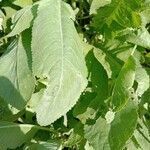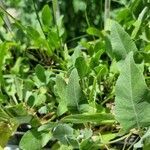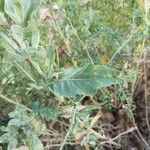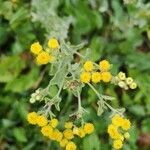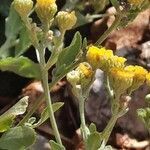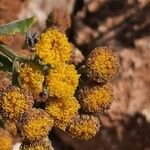A herb. It grows 90 cm high and spreads 45 cm high. It forms hard mats and keeps growing from year to year. It has rhizomes or underground stems. The leaves are silvery grey and scalloped along the edge. They are slightly hairy. They have an aroma. The leaves can be 30 cm long. The flowers are white and button like. The occur in large numbers and are small. They are yellow in the centre. The flowers open in full sunlight. The seeds are triangle shaped and ribbed.
